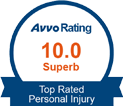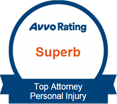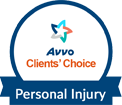A car accident can be confusing, especially if it is the first experience. Many people find it challenging to handle such cases since every decision made implies to compensation process. Even when you are at fault for an accident, you must take the necessary steps to maintain your rights. It is crucial to seek professional legal representation. However, there is more that one should do to ensure that everything goes as expected. We at The Personal Injury Law Firm is committed to providing the best guidance needed for your situation. Even so, you should consider the following steps after getting involved in an accident.
1. Remain on the Scene if Someone Has Been Injured
Anyone involved in an accident has a legal mandate to remain at the scene unless one needs to seek medical attention. Failing to adhere to this rule might lead to a California Hit and run charge.
Penalties for a California hit and run could amount up to $ 10,000 and a jail time more than a year if the accident caused severe injuries or death. If the crash led to damage to any property, you can leave the scene of the crash soon after identifying yourself with the person or people in charge of the property.
if you fail to adhere to this rule, you risk a California Misdemeanor hit and run charge that attracts penalties such as a fine amounting to $ 10, 000 and 6 months imprisonment.
2. Move Your Vehicle to a Safe Location
The California laws require one to move his or her vehicle in an area that does not jeopardize other people after getting involved in an accident. This means that the car should be in a position that does not cause any traffic jam or cause further injuries to other people.
However, you should not leave the vehicle while it is moving since it would be dangerous. Despite being an emergency, it is crucial to switch it off to avoid causing additional damage or injuring the people within the scene. You should also leave the vehicle to sit in waiting until a law enforcement officer arrives if the accident caused severe injuries or killed someone.
However, you should consider moving the vehicle if it poses a danger to the people within the scene.
3. Seek Medical Help if Necessary
You do not have to wait for the law enforcement officer if you are seriously injured and require immediate medical assistance. The California law provides an exception to anyone who leaves the scene to seek medical services and does not pose any penalties to such an action.
The best thing to do is call 911 or request someone else to do on your behalf if you are incapable of calling. Before you leave for the emergency room, you can leave your information with other drivers if you are capable of doing so.
4. Perform First Aid on the Other Person
If you are not seriously injured, you have a legal duty to seek medical services on behalf of another person who has sustained serious injuries from the accident. However, you can perform first aid in the meantime as you wait for the emergency medical team to respond.
The following is a step by step procedure that one can follow:
- Assess the situation to check for any life-threatening conditions before you try out anything. If there are other people around, you should involve them in the first aid process, while others try to reach out to emergency medical services.
- Establish the number of vehicles involved in the accident and check for any life-threatening conditions with the occupants
- prioritize people who are quiet and are not moving before you move on to those that are making noise, screaming, or crying. The rationale behind this idea is that those that are not moving might be unconscious and need emergency services. The fact that others are wailing, screaming, or making noise means that they are breathing.
- Check whether the quiet casualties are moving or responsive. If they are not responsive, check whether they are breathing. If you notice that they are not moving, position them on one side or lean them forward to let the airway remain open. Move them carefully to avoid twisting them.
- If the casualty can hear them, keep them warm and keep on talking to them to maintain their consciousnesses.
- Make sure that you support the head and neck of the casualty to avoid twisting. Avoid covering their head, talk to them and keep checking if they are breathing
- if one is not breathing you must resuscitate if you have not called the ambulance or the ambulance has not arrived at the scene. Ask the emergency team the best way to handle the process, especially if the casualty is still trapped in the vehicle.
- Remove the casualty from the vehicle if there is an immediate danger to his or her life. Some of the situations that cause risk to victims include the possibility of experiencing floods, explosion, or fire. Ask the emergency services, whether it is safe to do so and advisement over any significant risk that might occur.
- Take note of any tool or medical accessories that might help you handle the situation. For instance, try assessing the first aid kit box to get the right medical accessories.
5. Take Note of Information About the Other Vehicle
Once you have sought out the casualties, you should proceed to take the information about the vehicle involved in the accident. You should write down and take photos of information such as:
- The license number of all the cars involved in the crash
- The model, year of make, color
- The identification number of the vehicle (VIN)
You can find the VIN on the registration number or insurance of the car. It is crucial to take it in case the other driver does not have insurance cover. If the other driver fails to cooperate, you should not force him or her since touching someone else's vehicle without consent might bring along some legal complications.
The best positions to check the VIN in a vehicle is at the driver’s door side (the area where the door latches after closing), or the dashboard on the driver’s side ( where the panel meets the windshield).
For a motorcycle, its VIN is usually on the left side of the steering wheel.
6. Exchange Your Information with the Other Driver
Request the other driver to provide his or her license, registration, and insurance. Take photos of the documents or write them down, depending on the option that seems convenient to you. Besides that, take the details of the other people involved in the accident and anyone who witnessed the accident.
If a police officer arrives at the scene, you should note down the name and other identification details of the officer. Finally, make sure that you provide your information to the other driver despite being at fault.
7. Take Photos of the Accident Scene
You should learn various tips that will help you take the best photographs or capture all relevant details. The best thing to do is to take many pictures and sort them out before you deliver them to the proper authorities. Therefore, try taking photos of:
- The damages that your vehicle has sustained
- The costs that the other vehicle has sustained
- Skid marks
- The location or condition of the traffic signals
- The weather condition
- Any visible bodily injuries on you, your passengers, and the other people involved.
Gathering such details will help the law enforcement, the insurance company, your attorney, and other parties make necessary assessments of the accident.
It is essential to learn how to take photos from different angles and distances to capture clear images. Wide pictures are the best since they provide a full scope of the area surrounding the accident. You should also take medium distance photos (about 10- 15 ft away) and panoramic images (20 ft and more).
Try to keep the landmarks in every photo to demonstrate the scale and distance. You should also be aware of the weather condition and sunlight since these elements can affect your photos significantly. If you can, use various flash intensities or take pictures without flash if it can affect the quality. You can also experiment with the camera features and settings to capture the best details.
8. Document the Accident in Your Version
It is recommendable to take note of the accident as practical as it might be. You need to document everything, including the details that seem unimportant to you. Otherwise, you might end up forgetting them due to shock.
You need to write document details such as:
- The cross streets and the direction of movement of every vehicle involved in the accident
- The time and date of the accident
- Your estimation of the speed of every driver
- Adverse road conditions such as bad weather and potholes
- The color of the traffic lights if they were visible
9. Document Your Injuries
Take photos of any visible injuries that you have sustained using a camera or your phone. If you cannot manage to do so, request someone else to it on your behalf. Also, if you seek medical services, ask the nurse or any other medical profession attending to you to take the photos of your injuries.
You should as well take note of your understanding of your injuries besides the information provided by the medical team attending to you.
The more evidence you collect about your injuries, the higher the chances of getting the right recovery.
10. Report to the California DMV
The California laws provide a ten days window to report an accident to the California Department of Motor vehicle. One should report the accident if:
- Someone died at the scene
- Anyone sustained injuries be it minor or severe injuries
- The accident led to damages worth $ 10,000 or more
- Report the accident if you intend to put your claim through your auto insurance, and you are not sure about the details related to the crash.
Failing to report the accident within the requirements provided can lead to a suspension of your driver’s license up to a year.
11. Inform Your Insurance Company
There is no specific law in California that demands a policyholder to report an accident to the insurance company. However, the state allows auto insurance companies to raise their rates if the policyholder was not at fault.
However, all auto insurance requires the policyholder to report the accident as soon as possible. Otherwise, if you delay beyond the stipulated timeline, you risk denial of the coverage concerning the crash. Most insurance companies provide a reporting window of one or two days based on the circumstances surrounding the accident.
Despite sustaining minor damage, you still have to reach out to your automobile insurer to get the right coverage for the accident.
12. Seek Help from a Professional California Personal Injury Attorney
Seeking help from a personal injury attorney can help you protect your rights and know your right to compensation as well. A good lawyer has the responsibility of seeking a California medical lien. A California medical lien is a legally authorized payment of medical bills to a healthcare facility or provider after a court judgment.
The attorney should also come up with an insurance demand letter that will help in securing a settlement. Finding a reliable lawyer requires due diligence since every expert at your disposal cannot offer quality services. Here are a few aspects to take note of when choosing a personal injury attorney.
Check the General Experience that the Attorney Has
You need to know the education and work experience background of your attorney to determine whether it meets the requirements required for this practice. You can inquire about the school that the attorney attended, although it does not carry much weight compared with working experience.
Some of the factors that define the experience of attorney include the time of practice, number of cases, and how often the attorney represents similar cases such as yours.
You should also ensure that the attorney can offer timely services. There are a few aspects related to the possibility of finding timely services from an attorney. They include the proximity of the law firm, the convenience of communication, and the size of the law firm.
In that case, find someone close to your residence, has excellent communication channels, and has a large firm.
Evaluate the Personality of the Attorney
Your relationship with your attorney is crucial for the success of your settlement. So, you must find someone whom you can relate to without fuss. In that case, working with an attorney who has a likable personality will build a significant relationship between yourselves.
Check whether the expert is capable of listening to you, empathize, and is ready to guide you through issues that are hard to understand. You should organize an interview session with the lawyer to assess whether one has a likable personality.
Taking note of the factors provided above does not entirely guarantee that you will get a reliable professional. Finding one requires thorough assessment and enough time to be certain of the ability that the expert has. You should also trust your gut and avoid anyone who you are not comfortable with.
What You Should Avoid After a Car Accident
There are a couple of aspects that anyone involved in a car accident should avoid. Failing to avoid such factors can easily jeopardize your case or render full compensation. Some of the factors that one should avoid are:
Admitting Fault
The other driver involved in an accident might coerce you to admit that you were at fault, especially if the situation has put you into confusion. Despite being at fault, the other driver does not have the right to force you into admitting that you were at fault.
The California laws provide the shared comparative negligence laws that cut the damage costs among the drivers involved in an accident.
Besides that, do not ask whether the other driver needs medical assistance or whether he or she has sustained any injuries. This might be a form of admittance to the fault and can bar you from getting enough compensation. In case the other driver forces you to accept the blame, ask him or her to call your insurance firm rather than getting into an argument.
Saying that You are Not Hurt
The fact that you are not hurt does not mean that you should inform the other driver about it. You might be experiencing soft tissue injuries that take quite a while before they show up. Also, admitting that you are not hurt provides an excuse for the other driver's insurance company to deny full compensation to you.
You should say that you will seek medical services for assessment rather than admitting you are not hurt.
Providing Oral or Written Statement Without Consulting the Attorney
The law prohibits anyone involved in an accident from giving the other person’s insurance adjuster any statement, whether written, recorded, and orally. It also does not require one sign a medical authorization that provides information about your medical history and employment.
Besides, do not admit to a release until every repair has satisfied your expectations. Otherwise, you will fail to acquire the right compensation that suits you.
Finally, do not settle on a personal injury claim until you recover from your injuries, gathered information about the full extent of your cost and any future medical bills.
Exaggerating Your Injuries
You might be tempted to exaggerate your injuries after incurring an accident. Such an action is not recommended since your insurance company knows about this tactic using its sophisticated means. Also, you risk fines with allegations of fraud.
Legal Responsibilities in a Car Accident
Anyone involved in an accident has legal responsibilities to fulfill. Every proceeding after the accident has to follow the required legal demands or end up affecting your case. That is the reason why you need to hire a professional lawyer to provide the right legal advisement and representation. Some of the legal considerations that one should learn are:
Statute of Limitations in Car Accident Cases
A statute of limitations is a time limit set by the state that the plaintiff can bring a case to court. The statute of limitations varies according to the level of damages sustained from the accident. A car accident statute of limitations provides two years to file a lawsuit if there were people who suffered injuries in the process.
The case is different for wrongful death cases since the time starts to count after the person’s death rather than the time of the accident.
If you want to file a case over the damages that your car has sustained, you a three-year window to file a lawsuit against the alleged at-fault-driver.
California’s Comparative Negligence Rule
California’s comparative negligence rule provides that one can claim compensation from the car accident despite being at fault. However, the amount of compensation depends on the percentage of your responsibility. So, if the judges conclude that you were 25% faulty of the accident, you will get 25% of the total damage costs as compensation.
California Car Insurance Rules
You cannot assume the role of car insurance during a car accident claim. The California laws require anyone driving or owning a vehicle to have specific insurance coverage or show the ability to demonstrate financial responsibility for the accident. Therefore, if you do not fulfill this requirement, you might lose your full compensation or end up with a fine.
Find a Personal Injury Lawyer Near Me
It is tough going through the required legal procedure after incurring an accident. It needs one to involve the authorities and service providers to get the right compensation. Besides that, you probably have to nurse your injuries along with the case proceeding. That’s why you need to rely on an attorney to help you handle your case. If you are in California, we at The Personal Injury Law Firm are ready to offer the legal services that suit you. Call us at 619-625-8707 to schedule an appointment with one of our attorneys.
 800-492-6718
800-492-6718







